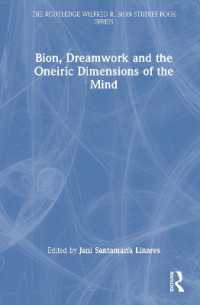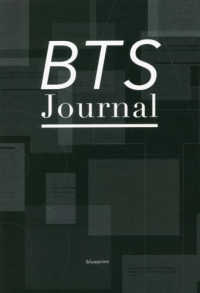Full Description
Tomorrow's LIS professionals will have to be conversant with all the tools and techniques for organizing information in different domains - from the library's shelves to the web and digital libraries. This core text covers the organization of the entire spectrum of information, and the principles, tools and techniques needed to do this effectively. The most up-to-date textbook yet available on this subject, this comprehensive book covers everything from traditional cat & class, through to metadata, information architecture and the semantic web. Written by experienced lecturers in the subject, who have authored several other successful textbooks, this book provides both an overview of the whole field of information organization, as well as an easy-to-understand introduction to each of the individual topics, which can be followed up with further study by following the references at the end of each chapter. The chapters cover: • cataloguing • bibliographic format • classification • subject indexing and vocabulary control • organization of digital information • metadata • mark-up languages • ontology • information architecture • the semantic web • current research, issues and trends. Readership: A key student text for all information and library studies courses, the book is also useful for practising LIS professionals who need an understanding of the various tools and techniques they need to master to effectively organize information.
Contents
1. Organizing information: what it means
Organization of information: what and why?
Classification
Purpose of classification
Cataloguing
Purpose of cataloguing
Library approaches to organizing information
About this book: why this book and for whom
Summary
Review questions
References
2. Information organization in different non-library environments
Introduction
The online database approach
The DBMS approach
The expert systems approach
Organization of information on the internet
New approaches to organizing information on the intranet and web
The semantic web
Summary
Review questions
References
3. Cataloguing
Introduction
What is a library catalogue?
AACR2
The process of cataloguing
Subject access to catalogues
Implications of basic cataloguing rules on OPACs
Cataloguing of internet resources
FRBR (Functional Requirements of Bibliographic Records)
Entities and their relationships
Importance of the FRBR Model
Summary
Review Questions
References
4. Bibliographic formats: MARC21 and others
Bibliographic formats
ISO 2709: format for bibliographic information interchange
MARC format
MARC 21
UNIMARC format
CCF
Summary
Review questions
References
5. Library classification
What is library classification and why?
Classification schemes
Types of bibliographic classification schemes
Major library classification schemes
Dewey main classes
Classification of electronic resources
Summary
Review questions
References
6. Subject heading lists and thesauri in information organization
Vocabulary control tools
Subject heading lists and thesauri
Thesauri
Subject headings lists and thesauri in the organization of internet resources
Summary
Review Questions
References
7. Organization of internet information resources
Typical characteristics of web information resources
Metadata: why not bibliographic formats?
Bibliographic classification schemes: are they suitable for organizing the web?
Subject heading lists: limitations for indexing internet resources
New tools and standards for managing internet information
The semantic web
Summary
Review questions
References
8. Metadata
Metadata - what?
Metadata - why?
Metadata - types
Metadata standards
Dublin Core
Other metadata standards
ISAD and EAD
TEI
Metadata management
Summary
Review questions
References
9. Markup languages
SGML
HTML
XML: origin and meaning
XML: what for?
HTML vs XML
Characteristics of XML
XML documents
DTD and XML Schema
Summary
Review questions
References
10. Ontology
Ontology: origin and meaning
Ontology, taxonomy, and thesaurus
Some common examples of ontology
Ontologies: what do they do?
Building an ontology: guidelines and methods
Tools for building ontology
Ontology languages: DAML+OIL and OWL
OWL
Ontology: role in information organization and management
Summary
Review questions
References
11. Information architecture
What is IA?
Why do we need an IA?
IA: what does it involve?
How to Build an IA?
Building an IA: approaches and stages
Outcome of an IA exercise
Summary
Review questions
References
12. The Semantic web
What is the Semantic Web?
How does the Semantic web differ from the conventional web?
The semantic web technologies
URI - uniform resource identifier
RDF
Semantic web applications
Semantic web and information access
Summary
Review questions
References
13. Information organization: issues and trends
Cataloguing: FRBR and semantic catalogue network
Metadata
Classification in the digital age
Ontologies
Semantic portals and ontologies
Semantic web technologies and digital libraries
User-driven classification of web resources
Conclusion
References








